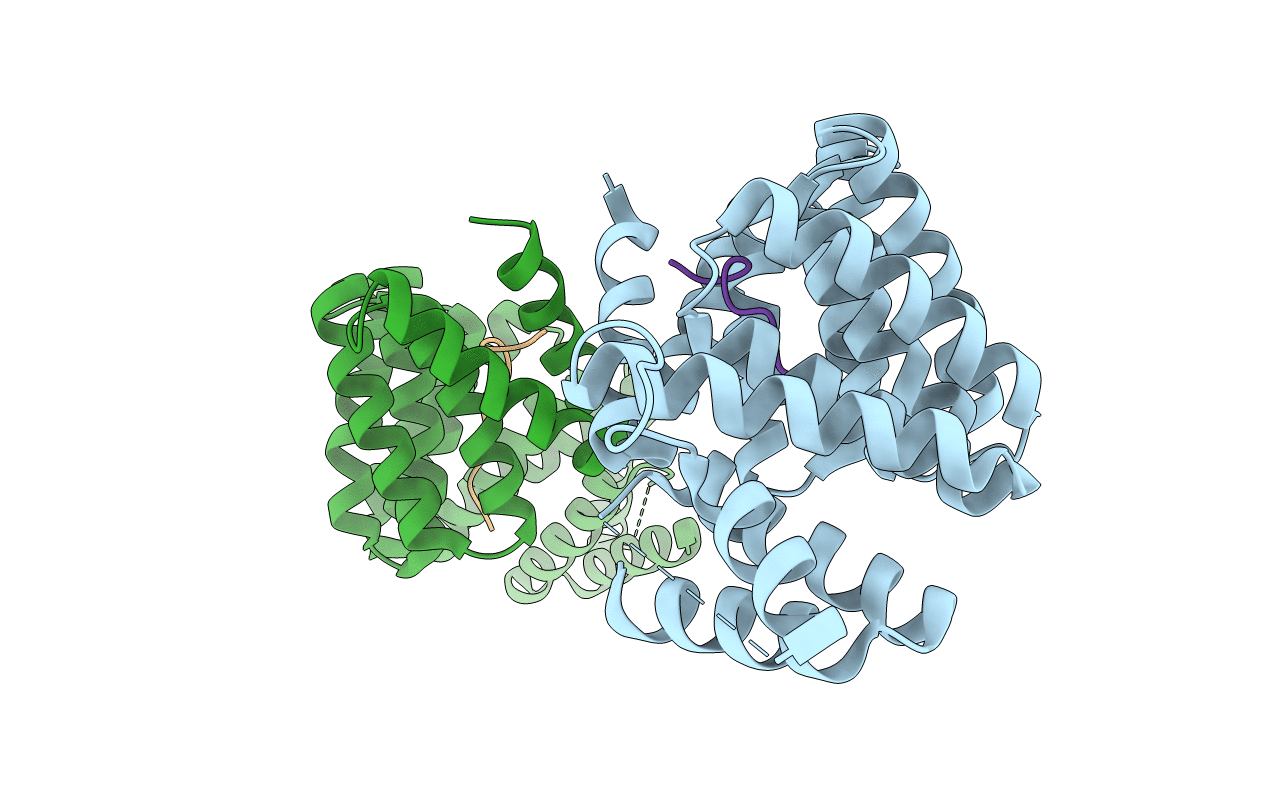
Deposition Date
2017-12-14
Release Date
2018-09-05
Last Version Date
2024-01-17
Entry Detail
PDB ID:
6F9I
Keywords:
Title:
Crystal structure of KLC2 bound to the second tryptophan-acidic motif peptide from calsyntenin-1
Biological Source:
Source Organism:
Mus musculus (Taxon ID: 10090)
Host Organism:
Method Details:
Experimental Method:
Resolution:
3.99 Å
R-Value Free:
0.27
R-Value Work:
0.25
R-Value Observed:
0.25
Space Group:
P 31 2 1


